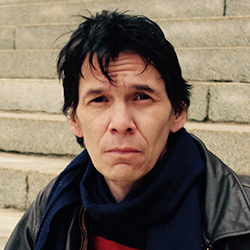Program Notes by Kate Bennett Wadsworth
Many of us were drawn to the period-instrument movement by the freshness and vitality of the music-making. As musicians, we have had the luxury of learning from an older generation of scholar-performers, including Tafelmusik's early mentors, Sigiswald Kuijken and the late Anner Bylsma, who used all of their intellectual and creative powers to breathe new life into styles of music-making that had been extinct for 200 years or more. Thanks to these pioneers, 18th-century period performance is now a living language.
Now a new wave of the period instrument movement seeks to bring the same creative renewal to the music of the 19th century. In 2007, the scholar-performer Bruce Haynes declared that the romantic playing style was extinct, and that no one today dared to play in it. That statement could be read as an epitaph, but quite a few of us decided to read it as a challenge instead. The experimental musicologist Clive Brown also threw down the gauntlet around this time in a now-infamous CD review called "Performing 19th-century chamber music: the yawning chasm between contemporary practice and historical evidence," in which he challenged younger musicians to take the artistic risks that established performers seemed to be avoiding. The questions rang in our ears: what exactly was this extinct romantic style, and why did it require so much daring?
Addressing the first question is a life's work in itself, as the Romantics have left us almost endless source material to learn from: treatises, memoirs, personal correspondence, concert reviews, and — most exciting and bewildering of all — early recordings. We can hear Tchaikovsky's voice on a wax cylinder, we can hear the playing and singing of his close colleagues, and we can even hear a handful of acoustic recordings by Mendelssohn's protegé, the violinist Joseph Joachim. The sounds on these recordings can answer our questions, but they can also blast through our beautiful theories and send us scurrying back to the written sources with fresh questions.
As to the question of daring: it is an open secret that our musical ancestors had much more artistic freedom than today's classical musicians. Our increasing reverence for the composer's creative process tricked us into giving up more and more of our own creativity as performers, leading to an increasingly literal interpretation of the notes on the page. While the period instrument movement has reclaimed a lot of the performer's creative scope within 18th-century music (and earlier), we are only just getting to know the artistic freedoms enjoyed by the Romantics. Putting these old freedoms back into circulation does indeed require courage and mutual trust: we have to step out of our own comfort zones and take liberties we were never allowed to take in our classical training.
"What exactly was this extinct romantic style, and why did it require so much daring?"
For example, we all learned as music students that we can make the music leap off the page by subtly varying the dynamics and sound colours according to our own feeling. The Romantics did this as well, but they also had the advantage of a multilayered, elastic use of time. The tempo of the music can vary as our heartbeat varies, or as the pace of a storyteller varies, increasing with excitement and decreasing with calm, grandeur, or emphasis. On a smaller scale, the written rhythms are only a rough guide to a whole world of rhythmic nuance. A remarkable memoir by Marion Bruce Ranken, a violinist who had studied with Joseph Joachim and his disciples at the Berlin Hochschule, reports that her teachers avoided the term "rubato" and instead spoke of "Freispielen" (free playing) and "Gestaltungskraft" (the power of shaping). "Imagine a composer to whom a melody has suddenly occurred," she writes. "While this is still a liquid and live thing in his mind and while the emotion which gave rise to it is still there he writes it down in case he should forget it — puts the bird in a cage, in fact — to prevent it from flying away. This in itself is doing a violence to the idea as it is to the bird, but that can’t be helped.” According to this philosophy, the notation is itself a distortion of the music, and a great performer is someone "who tries through close observance of the shadow to get in touch with the real thing that has cast the shadow." This sounds very natural in theory, but in practice rhythmic freedom can be a terrifying prospect. What if we don't all do the same things with our freedom? How will we play together as a group?
Equally essential to romantic expression was an inflection of pitch sometimes called portamento: a subtle (and sometimes not so subtle) sliding sound between the notes. Since portamento took on a syrupy, sentimental quality in the 20th century, the fear of inadvertently sounding like Bing Crosby has made most classical players very shy about sliding at all. Our task has been to turn back the clock to an era when inflections of pitch conveyed simplicity and sincerity. From looking at different kinds of treatises, we now know that sliding was just as central to 19th-century public speaking and stage acting as it was to singing and string playing, and simply knowing this gives us another way in.
Embracing these old freedoms of inflection requires not only courage and imagination, but also a creative space where we can experiment and take artistic risks together, feeling that we are among friends. The young Felix Mendelssohn enjoyed this advantage when he wrote the String Symphonies and the Sinfoniesatz. These were premiered in private concerts organized by the Mendelssohn family, so that both Felix and his sister Fanny could hear their compositions performed by professional musicians while they were still honing their compositional craft. Achieving mastery so early in life (he was just 12 when he penned the symphonies), Mendelssohn's music bursts with youthful energy, and a celebrated wholesomeness that goes against the romantic archetype of the sick, suffering artist. In the Scherzo from the Midsummer Night’s Dream, we encounter a different Mendelssohn: mature, fully in the public eye, and firmly in contact with what makes him special as a composer. Famous in his lifetime for his reverence for earlier music, he is also one of a tiny handful of creative voices who can invite us into fairyland.
Tchaikovsky's String Serenade was also premiered in a safe zone of sorts. Sensitive and introverted, Tchaikovsky did not trust many people. His colleagues in the Moscow Conservatory, especially the cellist Karl Albrecht, to whom the work is dedicated, formed a trusted musical family. The Serenade was first performed there in 1880 by a group of students and faculty, as a surprise for him when he was visiting Moscow after a long absence, and he wrote afterwards in a letter that the performance gave him a lot of pleasure. The piece itself is delicate, intimate, and graceful, with a lilting waltz in the second movement, a songlike melody in the third movement that evokes the world of the ballet, and a peppy finale based on the Russian folk melodies, "On the Green Meadow" (А как по лугу) and "Under the Green Apple Tree" (Под яблоньюзеленою).
Tafelmusik is fortunate to have an extended family of listeners who, over the years, have accompanied them on artistic adventures of all sorts. We began this project with a day of workshops to help the whole orchestra to get comfortable with a style that was new and, for some, downright bizarre. Now that we are on stage, we hope that you will join with us in the spirit of adventure that has guided our work. We don't exactly know what will happen next; that is part of the magic.

Kate Bennett Wadsworth is a cellist and gambist devoted to historical performance of all periods, with a special interest in 19th-century performance practice. She lived in Toronto and Montreal for a few years, and played occasionally with Tafelmusik at that time. She is now based in England, and put her research into 19th-century performance into practice on her recent recording of the Brahms cello sonatas. We are delighted to have her back, not only as cellist but also as leader of the workshop the orchestra undertook last week into 19th-century performance techniques. katebennettwadsworth.com
Andrew Balfour introduces Pyotr's Dream
This new commission was exciting for me because of my background in early music as a choral singer and my great love for Russian classical romanticism. I wrote it to complement the already-designed program, and while I first thought it might be linked to a specific Indigenous theme, it became apparent that I needed to instead fall back on my Western learning of the early classicalmusic canon to create something intriguing.
Tchaikovsky himself believed in the “poetic charm” of the church, revelling in the music and liturgy of the Russian Orthodox Church. Pyotr’s Dream is based on Tchaikovsky’s Hymn of the Cherubim, a choral composition he composed in 1878, taken from the Divine Liturgy of St John Chrysostom. It is considered one of the most celebrated of the Eucharistic services of the Eastern Orthodox Church and suggests a certain romantic ritualistic protocol which is familiar to me as the son of an Anglican priest.
This work expands beyond the particular beauty of choral music in church and embraces an appreciation of music as a spiritual truth. The period strings lend themselves to a singing tone, echoing the voice of the choral tradition, and help create a heightened sense of spirituality that is a universal beyond any church, religion, or ritual.
Andrew Balfour, composer


